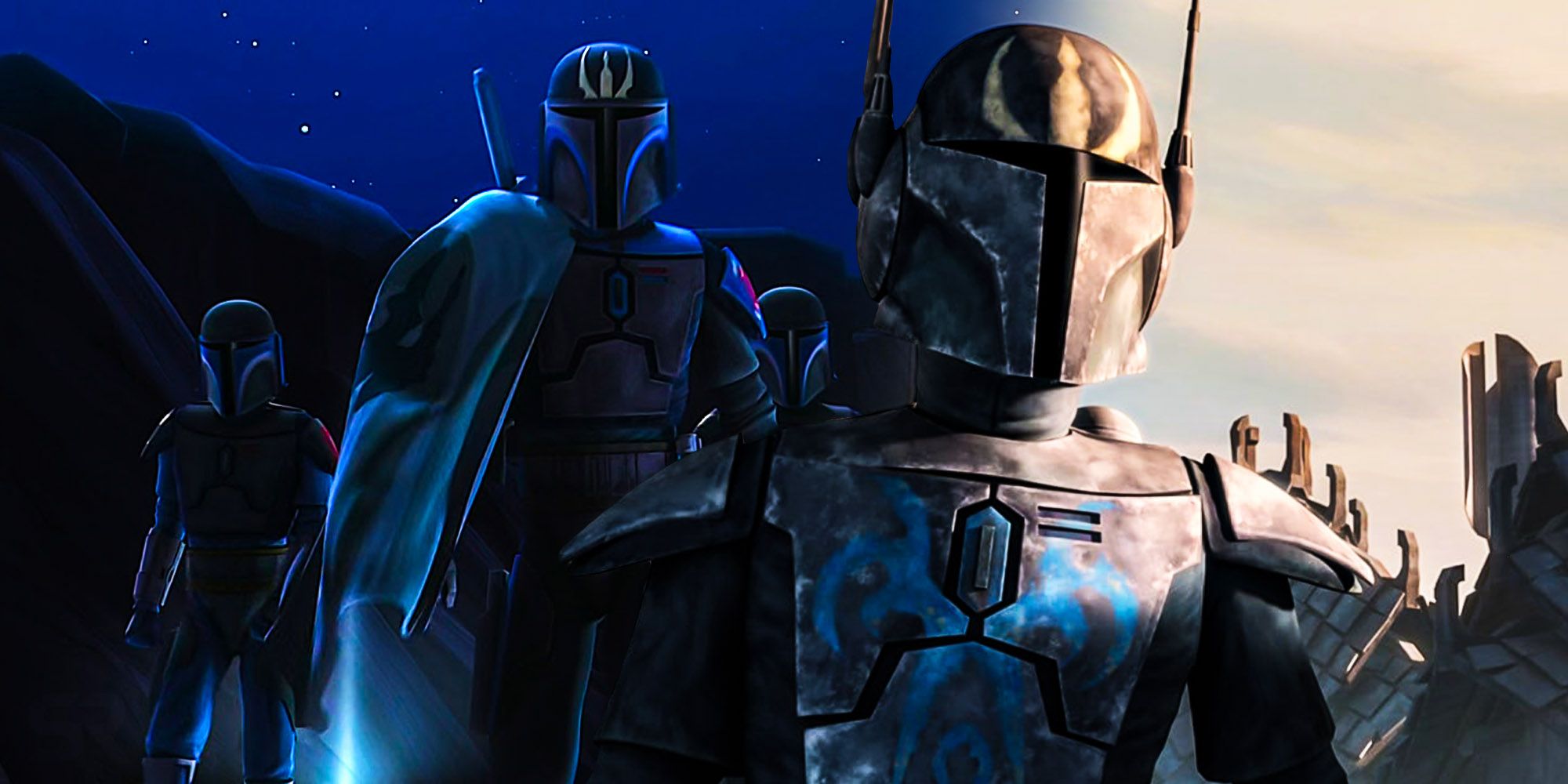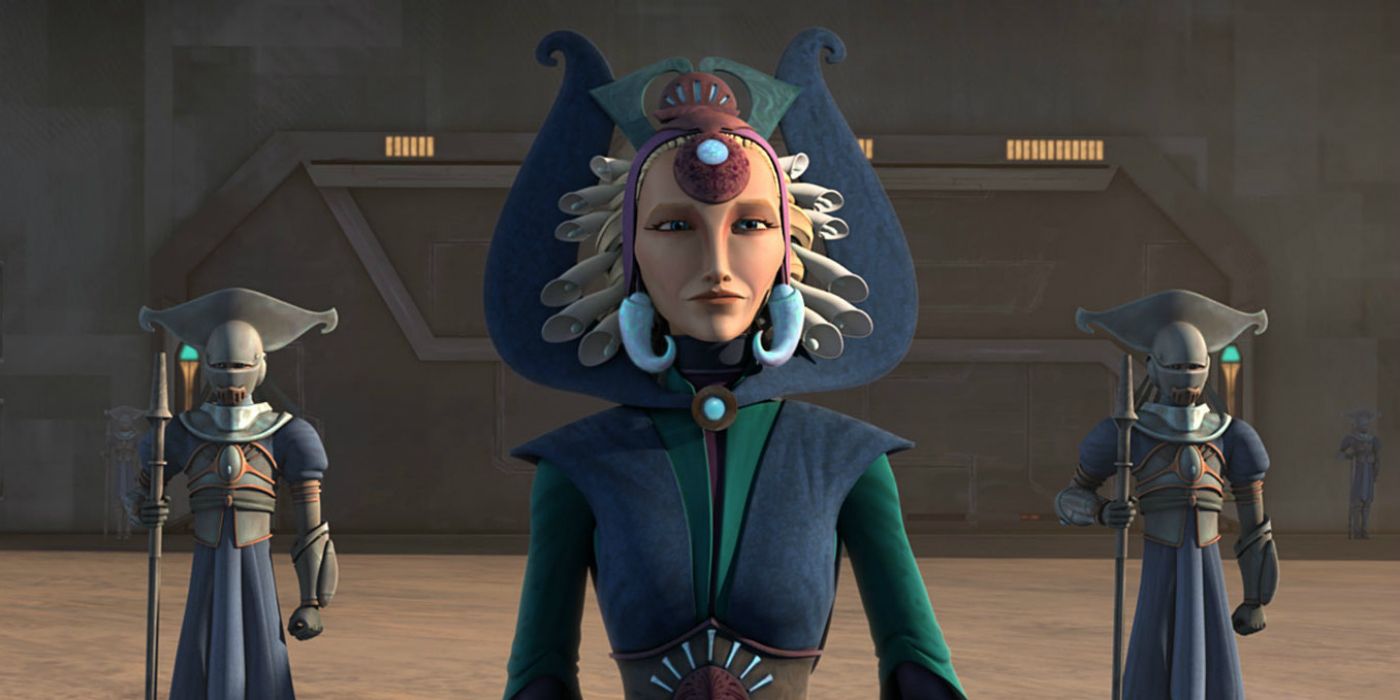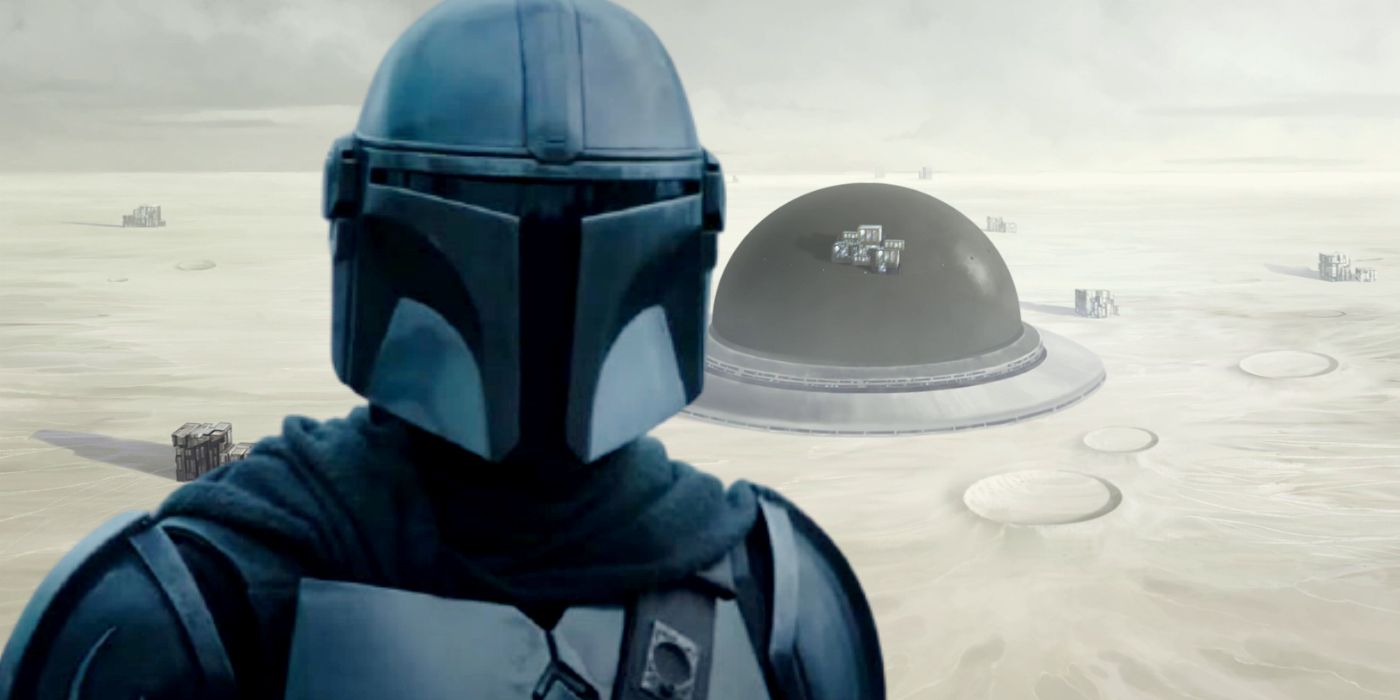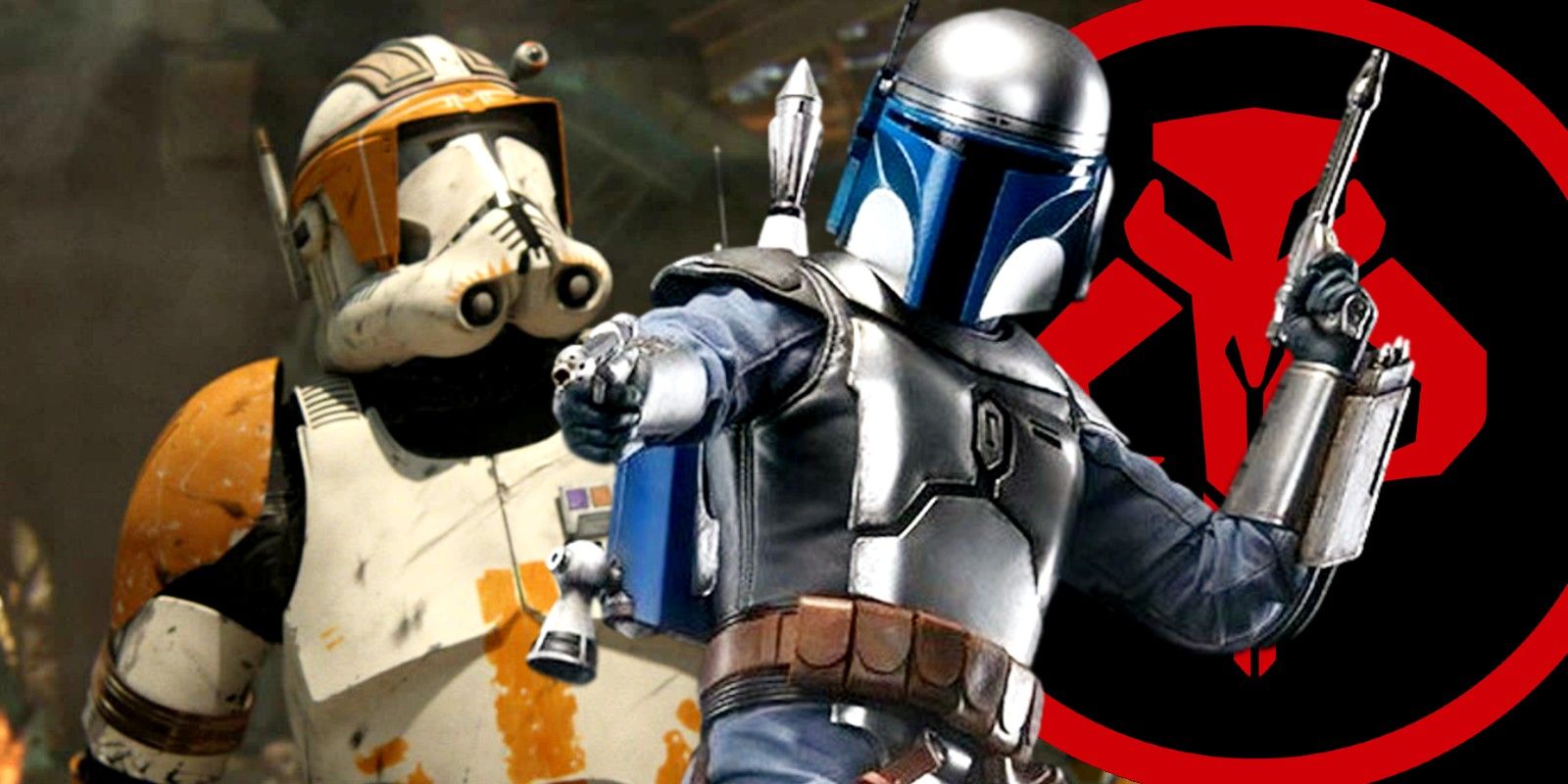
Star Wars: The Clone Wars made numerous changes and retcons to the established Star Wars continuity, and one of the clearest examples of this is the lore surrounding Mandalorian culture. The Clone Wars debuted in 2008, at a time where the Clone Wars era, the three years between Star Wars: Episode II – Attack of the Clones and Star Wars: Episode III – Revenge of the Sith, was thoroughly depicted through the original Clone Wars multimedia project. Although the 2008 TV series was well-received by viewers (and deservedly so), it generally ignored the franchise’s pre-established lore, outside of the films, making it nearly impossible to fit into the Star Wars timeline until the 2014 restructuring of the Star Wars canon.
The initial Clone Wars project, which lasted from 2002 to 2007, consisted of numerous novels, comics, video games, and even an award-winning animated series, 2003’s Star Wars: Clone Wars. These properties were part of the Expanded Universe, which was the official Star Wars continuity at the time, as was often stated by Lucasfilm creatives and executives. Despite this, it was clear that a major Star Wars continuity shift was in progress when 2008’s The Clone Wars animated series was released. The newer Clone Wars series was action-packed and saw the debut of numerous fan-favorite characters, such as Ahsoka Tano and Captain Rex, but it consistently disregarded lore that was canonical at the time.
2008’s The Clone Wars rewrote the backstories and personalities of characters like Barriss Offee, Boba Fett, and Asajj Ventress, resurrected Darth Maul and Eeath Koth, and drastically reimagined entire planets, such as Dathomir and Korriban. This was particularly evident in how it approached its Mandalorian characters. Long before Disney+ had a series focusing on Din Djarin, Mandalorian culture and history had been fleshed-out in the Expanded Universe, and was then delved into again in The Clone Wars, which explored elements from its home planet to the Darksaber, its various faction, and beyond, but made some major changes to Legends along the way.

Legends-era lore established the planet Mandalore barely had a centralized government. Mandalorian society consisted of independently-led warrior clans. Some, like Clan Fett, carried an ancient lineage that existed thousands of years before the events of the Star Wars saga. The closest thing that Mandalorians had to a head of state was the Mand'alor (also called the Mandalore), a warlord-like figure who had to be recognized by all clans as their collective leader to maintain their position. Mandalorian society was, among other things, a meritocracy, so the Mand'alor could easily be replaced by a stronger or more competent ruler, regardless of age, gender, lineage, or species.
The Clone Wars season 2 revealed that Mandalore had a drastically different society during the prequel era. The Mandalorian government was not only highly centralized and bureaucratic but was also a pacifist ruling body. The Mandalorian warrior clans of ancient history were banished to Concordia, where many of them secretly fell under the control of the Death Watch, a fundamentalist terrorist group, who brutally slaughtered innocents in their pursuit of returning Mandalorian society to their warrior ways. Other canon material, such as Star Wars Rebels and The Mandalorian, introduced more details regarding the Mandalorian warrior clans, with some resembling Legends-era Mandalorian culture. For instance, the Mandalore title was won in single combat, and the ceremonial weapon and symbol of their leadership was the Darksaber, an ancient lightsaber built by the galaxy’s only Mandalorian Jedi.

In Legends, the planet Mandalore had a variety of terrains, from rugged jungles and forests to vast oceans and plains. While Mandalore had cities, most dwellings were relatively low-tech (by Star Wars standards), with Mandalorian people remaining in touch with nature, like the Wookiees of Kashyyyk and the New Jedi Order. Mandalore’s capital, Keldabe, was one of their few cities, as well as the home of the Mand'alor. Keldabe also housed the headquarters of MandalMotors, a starship manufacturer and an invaluable part of Mandalore’s economy. Mandalorian society existed on neighboring systems as well, such as Concord Dawn, an agricultural planet and the homeworld of Jango Fett.
Like the Mandalorian government, the planet Mandalore was also significantly changed in The Clone Wars. Canon’s Mandalore may have had a similar terrain to its Legends counterpart at one point, but centuries of destructive conflicts between warrior clans gradually terraformed Mandalore into a harsh desert world whose toxic environment was hazardous to its predominantly human population. This led the pacifist Mandalorian society to develop domed cities, such as their capital of Sundari, to allow their people to survive on the war-ravaged planet. The canon version of Concord Dawn, similarly, was devastated by Mandalorian wars, though the results were far graver than on Mandalore. A significant portion of Concord Dawn’s southern hemisphere was destroyed, disfiguring the planet and leaving it even more devastated than Mandalore.

Clone Troopers are generally similar in both canon and Legends, but one of the few major differences was their relationship with their clone template, Jango Fett. In Legends, Fett treated the training and upbringing of the Clone Army with the same devotion as his bounty hunting career. Thanks to Jango, all clones, from the troopers to his ARC Troopers were Mandalorians by culture. Legends Clone Troopers were fluent in the Mandalorian language of Mando’a, with standard troopers singing traditional Mandalorian war chants during training and time off-duty, and enjoying uj cake (a popular Mandalorian ration). Many Legends clones, particularly commandos and ARC Troopers, took on Mandalorian names as expressions of their personalities and acknowledgments of their culture.
In canon, Jango Fett saw his Clone Troopers as simply the result of one of his jobs. While the Legends-era Jango saw all clones, including his son Boba, as his legacy, his canon counterpart only gave this Mandalorian honor to Boba Fett. As a result, canon Clone Troopers created their own culture, influenced perhaps more by the Jedi and bounty hunter training instructors than their Mandalorian template. The only exception to this is the Republic’s Clone Pilots, who were trained by the Mandalorian Journeyman Protector, Fenn Rau. Thanks to this retcon, the Mandalorians did have a significant cultural influence on a specific type of clone in Star Wars: The Clone Wars.
from ScreenRant - Feed https://ift.tt/3tGiauc


0 Comments